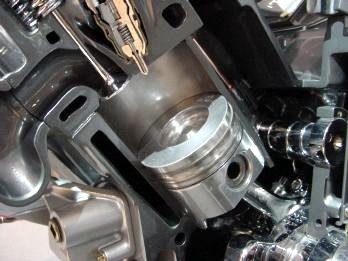In this website we try to explain the operation of the main types of engines from a theoretical point of view. Our objective is also to support this information with simple explanations on physics concepts related to the theme of the web.
We schematically present the parts, operating cycles and characteristics of the following types of motors:
- The heat engine or internal combustion engine. Within the thermal engines we explain the gasoline engine (or Otto engine and the diesel engine).
- The electric motor. This engine has undergone a great evolution throughout history and right now it is one of the most used types of engines with the most future projection. We will discuss DC electric motors and AC electric motors.
- Stirling engine. The Stirling motor is a type of motor that can run on any heat source.
- The steam machine. The steam engine was of great importance at the time, especially as a motor. Little by little the thermal motors and the electric motors have been removing ground. The steam engine, in the updated version, is used especially in its version of an electric steam generator in, for example, nuclear power plants.
Thermal motor
A heat engine is an alternative motor that converts heat energy (heat) into mechanical energy. In this sense, the steam engine could also be considered a thermal engine, but due to its special characteristics we will explain it separately.
Among the thermal engines include:
- The diesel engine, which runs on the diesel cycle.
- The Otto engine or gasoline engine, which works according to the Otto cycle.
Each of these engines works with a certain cycle, (the diesel cycle and the Otto cycle respectively). In this site we will analyze both operating cycles, their characteristics and we will compare them between them. We will study the difference between the real cycle and the theoretical cycle of these motors.
In parallel, both types of motors can divide their cycles into times. Suggest this classification there are two-stroke engines and four-stroke engines. We will explain the characteristics of a four-stroke engine and those of a two-stroke engine.
The most commonly used motors in automotive today are of one of these two types.
Engine diesel
 The diesel engine is an internal combustion heat engine. Its main feature is in the fuel ignition. This is achieved by the high temperature produced by the compression of the air inside the cylinder.
The diesel engine is an internal combustion heat engine. Its main feature is in the fuel ignition. This is achieved by the high temperature produced by the compression of the air inside the cylinder.
It was invented and patented by Rudolf Diesel in 1895, from which it derives its name. It was initially designed and presented at the 1900 international fair in Paris as the first engine for "biofuel", such as pure palm or coconut oil.
Diesel also claimed in its patent the use of coal dust as fuel, although it is not used due to how abrasive it is.
Gasoline engine
The Otto engine or gasoline engine is a type of internal combustion engine. The gasoline engine runs on the Otto cycle. The ignition of the fuel is generated by a spark generated by the spark plug.
This engine, also called a spark ignition engine or Otto engine.
Steam machine
We define it as a steam engine because it can function both as a motor and as an electric generator. Today, the steam engine is used more frequently as a generator in thermal and nuclear power plants than as a motor. The importance of the steam engine, throughout the history of the steam engine has been losing relevance due to thermal and electric engines.
The operating principle is to generate steam and use the steam pressure to drive a piston. In this way thermal energy is converted into mechanical energy.
Electric motor
Electric motors are those motors that are capable of transforming electrical energy into rotating mechanical energy. There are those that use direct electric current and others that work by alternating electric current.
The electric motor is becoming more and more important in the industrial world and especially in the domestic world. It is a clean engine, with a good size, weight, cost and performance ratio.
There are many types of electric motor that can be distinguished between direct current motors and alternating current motors.